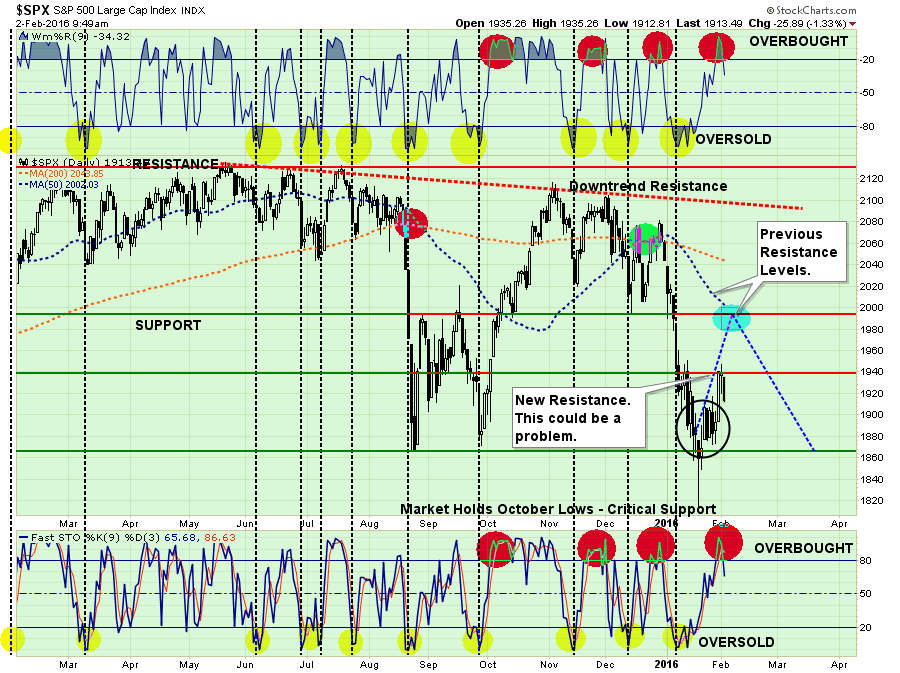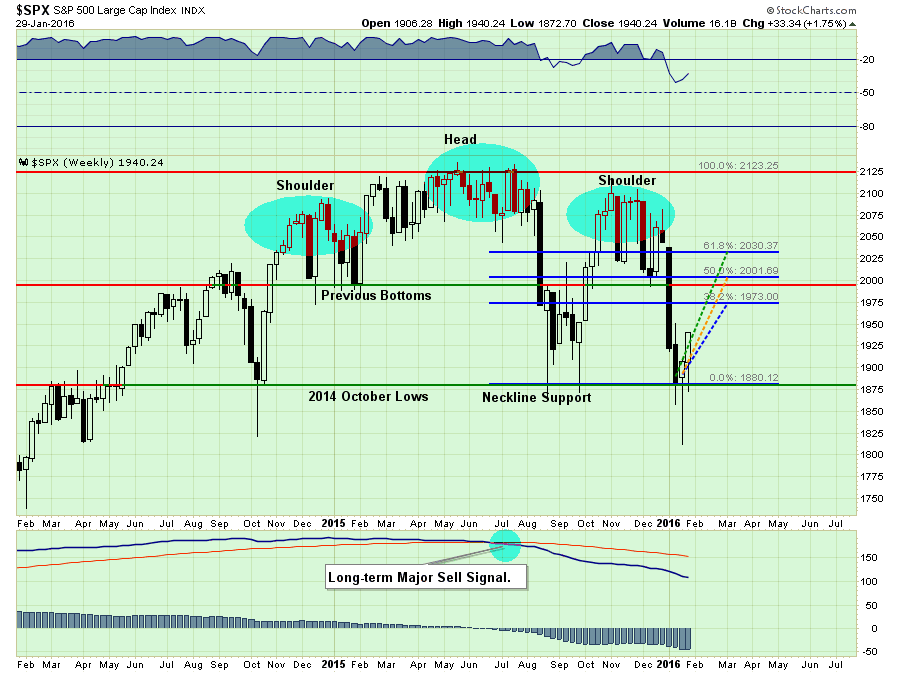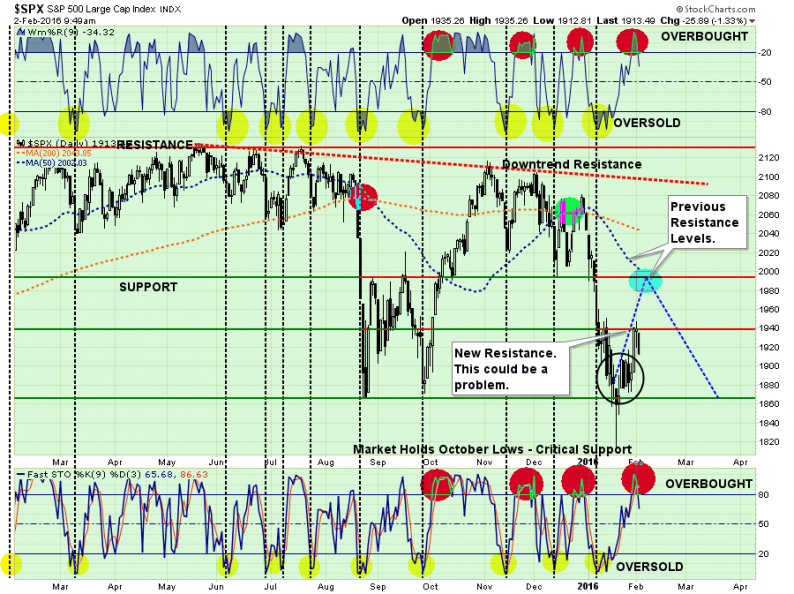In this past weekend’s newsletter, I discussed the two factors that saved the markets from breaking critical support and likely pushing the markets into a critical correction. To wit:
“The first is month-end window dressing by fund managers after a brutal start to the new year. After much liquidation, fund managers will need to rebalance holdings.
The second is the potential for Central Banks to intervene which could embolden the bulls as further support could temporarily delay the onset of a bear market and recession.
Not to be disappointed, the BOJ announced a move into NEGATIVE interest rate territory to try and boost economic growth in Japan.”
Those two factors pushed the markets higher on Friday, and as shown below, broke the markets out of the recent consolidation near critical support. That was the good news.

The bad news comes from the overbought / oversold indicators at the top and bottom of the chart. As I stated on Friday:
“The oversold condition that once existed has been completely exhausted due to the gyrations in the markets over the last couple of weeks. This leaves little ability for a significant rally from this point which makes a push above overhead resistance unlikely. Just as an oversold condition provides the necessary ‘fuel’ for an advance, the opposite is also true.”
The problem is that the market, as of this morning, appears to be failing at minor resistance. It is now critical that the markets hold previous lows or a more severe correction will likely take hold.
MORE BAD NEWS
In last week’s technical update I noted three potential reflexive rallies that should be used to rebalance equity risk into as follows:
“The chart below identifies the potential retracement levels of such a reflexive rally.
1970ish – Sell laggards and losers in portfolios.
2000ish – Trim back winners to target levels
2030ish – Be at final risk-adjusted allocations.”

NOTE: For conservative investors it is currently unlikely the market will rise much more than between 1970-1990 during this rally. I would do the majority of your portfolio rebalancing and risk reduction in this range.













Leave A Comment